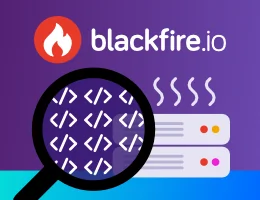Cache Invalidation
"There are only two hard things in Computer Science: cache invalidation and naming things." -- Phil Karlton
Once a URL is cached by a gateway cache, the cache will not ask the application for that content anymore. This allows the cache to provide fast responses and reduces the load on your application. However, you risk delivering outdated content. A way out of this dilemma is to use long cache lifetimes, but to actively notify the gateway cache when content changes. Reverse proxies usually provide a channel to receive such notifications, typically through special HTTP requests.
Caution
While cache invalidation is powerful, avoid it when possible. If you fail to invalidate something, outdated caches will be served for a potentially long time. Instead, use short cache lifetimes or use the validation model, and adjust your controllers to perform efficient validation checks as explained in HTTP Cache Validation.
Furthermore, since invalidation is a topic specific to each type of reverse proxy, using this concept will tie you to a specific reverse proxy or need additional efforts to support different proxies.
Sometimes, however, you need that extra performance you can get when explicitly invalidating. For invalidation, your application needs to detect when content changes and tell the cache to remove the URLs which contain that data from its cache.
Tip
If you want to use cache invalidation, have a look at the FOSHttpCacheBundle. This bundle provides services to help with various cache invalidation concepts and also documents the configuration for a couple of common caching proxies.
If one content corresponds to one URL, the PURGE model works well.
You send a request to the cache proxy with the HTTP method PURGE (using
the word "PURGE" is a convention, technically this can be any string) instead
of GET and make the cache proxy detect this and remove the data from the
cache instead of going to the application to get a response.
Here is how you can configure the Symfony reverse proxy
to support the PURGE HTTP method. First create a caching kernel that overrides the
invalidate() method:
1 2 3 4 5 6 7 8 9 10 11 12 13 14 15 16 17 18 19 20 21 22 23 24 25 26 27 28 29 30 31 32 33
// src/CacheKernel.php
namespace App;
use Symfony\Bundle\FrameworkBundle\HttpCache\HttpCache;
use Symfony\Component\HttpFoundation\Request;
use Symfony\Component\HttpFoundation\Response;
// ...
class CacheKernel extends HttpCache
{
protected function invalidate(Request $request, bool $catch = false): Response
{
if ('PURGE' !== $request->getMethod()) {
return parent::invalidate($request, $catch);
}
if ('127.0.0.1' !== $request->getClientIp()) {
return new Response(
'Invalid HTTP method',
Response::HTTP_BAD_REQUEST
);
}
$response = new Response();
if ($this->getStore()->purge($request->getUri())) {
$response->setStatusCode(Response::HTTP_OK, 'Purged');
} else {
$response->setStatusCode(Response::HTTP_NOT_FOUND, 'Not found');
}
return $response;
}
}Then, register the class as a service that decorates
http_cache:
1 2 3 4 5 6 7 8 9 10 11 12 13
// src/CacheKernel.php
namespace App;
// ...
use Symfony\Component\DependencyInjection\Attribute\AsDecorator;
use Symfony\Component\DependencyInjection\Attribute\Autoconfigure;
#[Autoconfigure(bind: ['$surrogate' => '@?esi'])]
#[AsDecorator(decorates: 'http_cache')]
class CacheKernel extends HttpCache
{
// ...
}1 2 3 4 5 6 7 8
# config/services.yaml
services:
App\CacheKernel:
decorates: http_cache
arguments:
- '@kernel'
- '@http_cache.store'
- '@?esi'1 2 3 4 5 6 7 8 9 10 11 12 13 14 15
<!-- config/services.xml -->
<?xml version="1.0" encoding="UTF-8" ?>
<container xmlns="http://symfony.com/schema/dic/services"
xmlns:xsi="http://www.w3.org/2001/XMLSchema-instance"
xsi:schemaLocation="http://symfony.com/schema/dic/services
https://symfony.com/schema/dic/services/services-1.0.xsd"
>
<services>
<service id="App\CacheKernel" decorates="http_cache">
<argument type="service" id="kernel"/>
<argument type="service" id="http_cache.store"/>
<argument type="service" id="esi" on-invalid="null"/>
</service>
</services>
</container>1 2 3 4 5 6 7 8 9 10 11 12 13 14 15 16 17
// config/services.php
namespace Symfony\Component\DependencyInjection\Loader\Configurator;
use App\CacheKernel;
return function (ContainerConfigurator $container): void {
$services = $container->services();
$services->set(CacheKernel::class)
->decorate('http_cache')
->args([
service('kernel'),
service('http_cache.store'),
service('esi')->nullOnInvalid(),
])
;
};Danger
You must protect the PURGE HTTP method somehow to avoid random people
purging your cached data.
Purge instructs the cache to drop a resource in all its variants
(according to the Vary header, see Varying the Response for HTTP Cache). An alternative to purging is
refreshing the content. Refreshing means that the caching proxy is
instructed to discard its local cache and fetch the content again. This way,
the new content is already available in the cache. The drawback of refreshing
is that variants are not invalidated.
In many applications, the same content bit is used on various pages with different URLs. More flexible concepts exist for those cases:
- Banning invalidates responses matching regular expressions on the URL or other criteria;
- Cache tagging lets you add a tag for each content used in a response so that you can invalidate all URLs containing a certain content.

